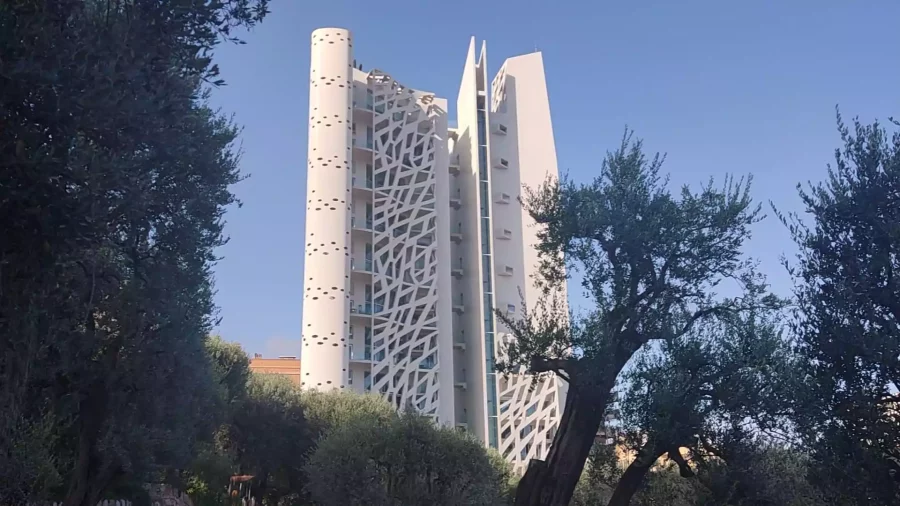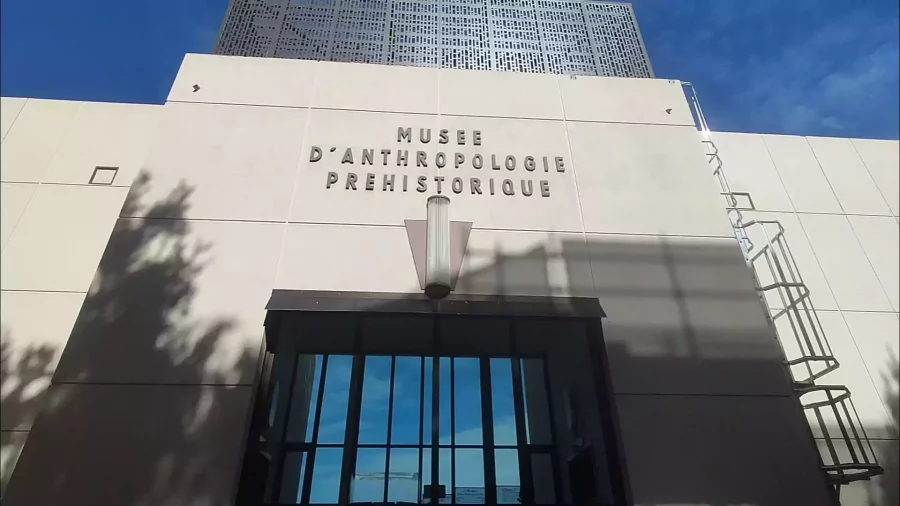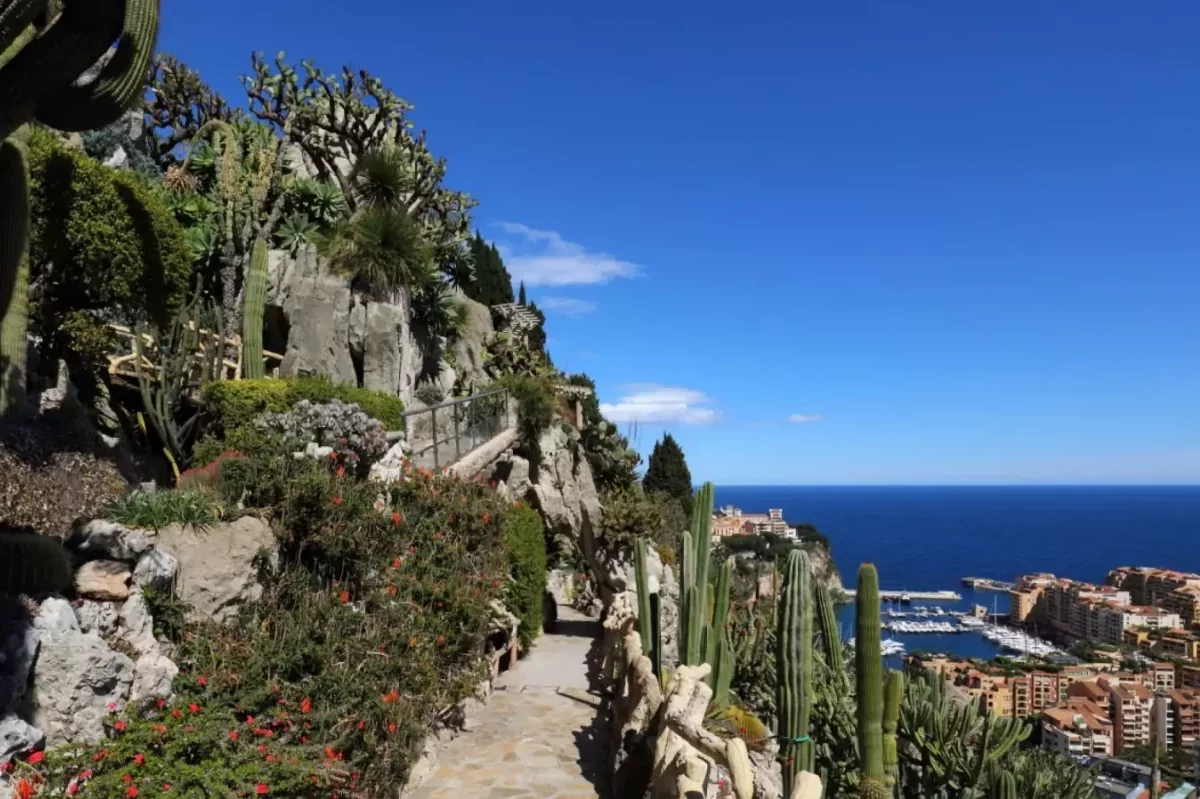As the name would suggest, this neighbourhood is home to Monaco’s magnificent exotic gardens, but there is far more to it than just that.
In the upper reaches of the Principality, at its western edge, sits the Jardin Exotique neighbourhood.
Nearly 15% of Monaco’s population has made this architecturally eclectic quartier home and just over 5,000 people live here in a fascinating mix of buildings and villas, new and old, that seem to blend all eras of design.
AN ARCHITECTURAL ADVENTURE
Located close to the neighbourhood’s Princess Antoinette Park – a public space named for the elder sister of Prince Rainier III and dedicated to the legendary olive trees of the region – is a classic example of the real estate in the Jardin Exotique: Le Simona.
A soaring, bright white edifice with curves and breath-taking vertical height, Le Simona was designed by Jean-Pierre Lott and was completed just over a decade ago in 2012. The green-fronted walls of the two towers reflect the vegetation from which the neighbourhood takes its name, but the property also stands for the modern luxury synonymous with recent real estate developments in Monaco.

JARDIN EXOTIQUE
As the place that gives the neighbourhood its name, we have to mention the Jardin Exotique, even if the main attraction is closed and will not reopen until sometime next year.
Many of the succulent plants that fill the garden were originally brought in from Mexico in the 1860s and planted the Jardin Saint Martin. In 1912, Prince Albert I acquired the piece of land on which today’s gardens sit and Louis Notari, Monaco’s chief engineer at the time, transformed it. The original plants were moved there along with some additions from South America and Africa soon after.
The gardens were officially opened in 1933, and guided tours of a grotto that contained evidence of prehistoric inhabitants were added in 1950. The complex is currently undergoing renovations, although it is still possible to visit the greenhouses.
MUSEUM OF PREHISTORIC ANTHROPOLOGY
It is in this part of Monaco that you will also find the Museum of Prehistoric Anthropology, which was first founded in 1902 by Prince Albert I “in order to preserve the vestiges of primitive humankind exhumed from the soil of the Principality and the surrounding regions”.
The collections trace the steps of humanity in the glacial and interglacial periods dating back a million years ago. The museum carries out excavations and exhibits, and houses a fine collection of prehistoric artifacts.

VILLA PALOMA
The neighbourhood also is the site of the Nouveau Musée National de Monaco’s (NMNM) Villa Paloma, one of the two buildings that make up the modern art museum. This site features many contemporary art shows all throughout the year, such as the ongoing George Condo exhibit.
PRINCESS ANTOINETTE PARK
The already mentioned Princess Antoinette Park is a beauty-filled place one hectare in size that shelters centuries-old olive trees. But far from being a “precious” and overly protected space, the park is a lively destination for children and their families, offering activities suitable for all ages.
There are various play areas with swings, slides and the like, as well as the multi-sports grounds for ball games, including ping-pong tables, a badminton and volleyball court, and a small skateboard ramp. The mini farm is home to sheep, goats, ducks, chickens and rabbits, and is hugely popular with the park’s youngest visitors. A zen space was recently added and a 18-hole mini golf course completes the picture.
With all these wonderful things to see and do, a trip to the Jardin Exotique district is well worth the time, especially for families looking for things to do with their children.
Make sure you’re never left out of the conversation.
Sign up for the Monaco Life newsletter, and follow us on Facebook, Twitter, Instagram and LinkedIn.
Featured photo source: Mairie de Monaco / Jardin Exotique
